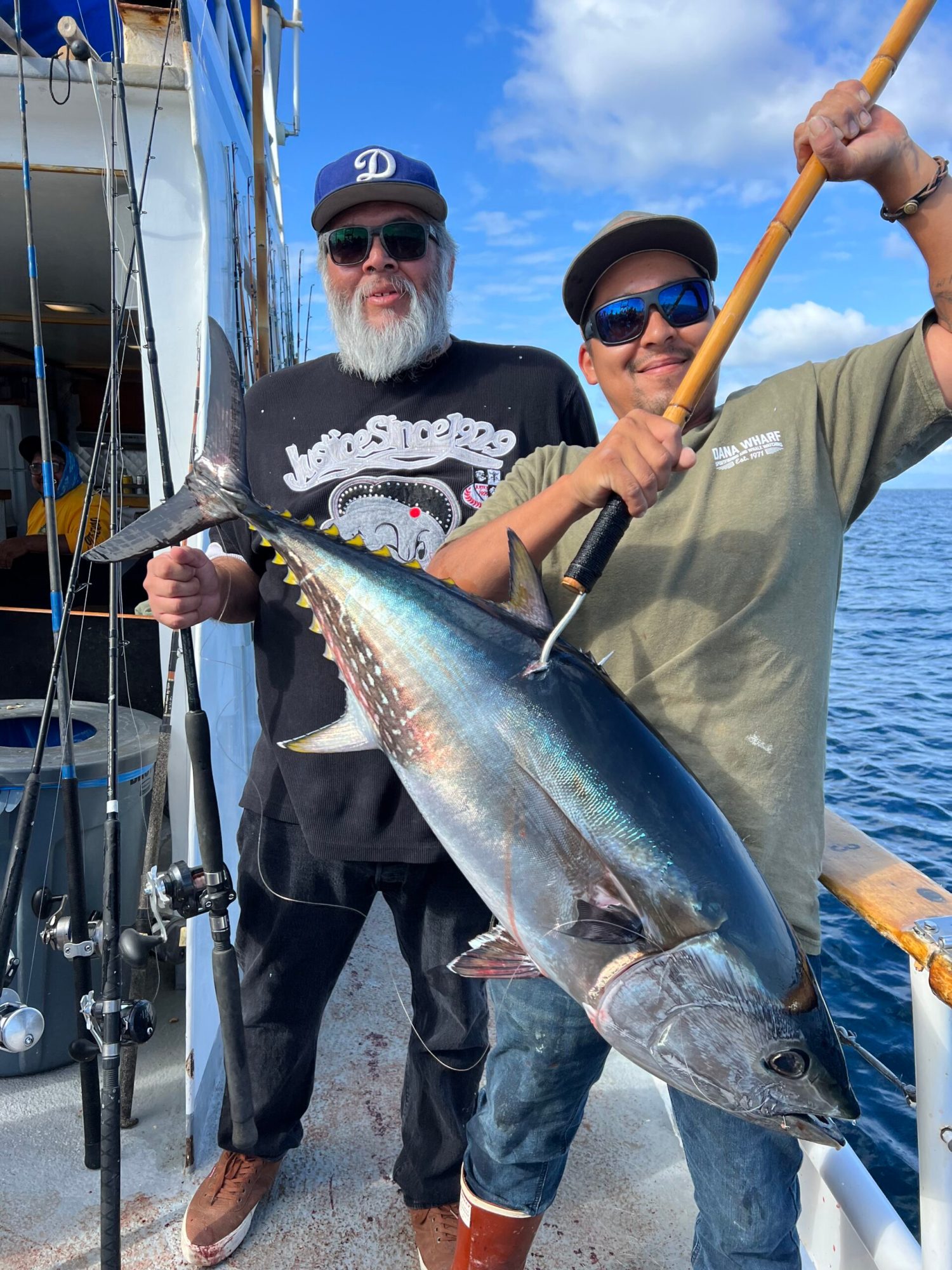When Is Tuna Season in Southern California? Everything You Need to Know

Best Time For Tuna Fishing In Southern California
Southern California’s expansive Pacific coastline is a top destination for anglers, offering world-class deep sea fishing opportunities. Among the most prized catches are bluefin and yellowfin tuna, known for their size, strength, and the thrill of the fight.
But timing is everything when it comes to tuna fishing. The best season typically runs from late spring through early fall, when warm currents bring these powerful fish closer to shore.
In this guide, we’ll break down the peak months for tuna fishing, the best areas to target them, and the most effective techniques for landing your catch. Whether you’re new to the sport or a seasoned offshore angler, this guide will help you make the most of tuna season in Southern California.
Understanding Tuna Fishing Seasons in Southern California
Tuna fishing seasons in Southern California are shaped by nature’s rhythms. These seasons dictate when you’ll find bluefin and yellowfin tuna most active.
Typically, the best time spans from late spring to early fall. Each species of tuna has slightly different peak times.
Peak Seasons for Bluefin and Yellowfin Tuna
Bluefin tuna are usually more active from June to October. During these months, they swim closer to the shore, making them accessible to anglers.
Yellowfin tuna, on the other hand, have a longer season. They can often be found from August to November, peaking in September and October.
Monthly Breakdown of Tuna Activity
- May-June: Start of bluefin activity.
- July-August: Increased catches of both bluefin and yellowfin.
- September-October: Peak season for yellowfin, sustained bluefin activity.
- November: Yellowfin catches taper off.
Understanding these seasonal patterns is essential for planning successful fishing trips in Southern California.
Prime Locations for Tuna Fishing: Dana Point and Beyond

Dana Point is a renowned starting point for tuna fishing in Southern California. It’s famous for its proximity to rich fishing waters.
One standout option there is Dana Wharf Sport Fishing. They offer various charters catering to different skill levels. Their expertise helps enhance your fishing experience.
Beyond Dana Point, other notable departure points include Newport Beach and San Diego. These locations also provide excellent access to fertile fishing grounds, attracting many anglers.
Choosing a departure point often depends on convenience and the type of fishing experience you seek. Each area offers unique opportunities.
Tuna Fishing Techniques: Maximizing Your Catch
To improve your success on the water, it’s important to understand and apply the right tuna fishing techniques. Different methods work best depending on ocean conditions and how tuna are feeding that day.
Live bait fishing is a go-to strategy, especially when targeting bluefin and yellowfin tuna. Sardines and anchovies are highly effective, drawing tuna in with their natural movement and scent.
Trolling is another popular method, particularly useful for covering large areas and locating active schools of tuna. By dragging lures or bait behind a moving boat, anglers can trigger strikes from fast-moving fish in open water.
For a more advanced challenge, kite fishing is a proven technique among experienced anglers. This setup allows the bait to dance on the ocean’s surface, mimicking struggling prey and enticing tuna to strike aggressively.
Each technique requires practice and adaptability. Ocean conditions, bait availability, and tuna behavior can change daily, so being flexible and trying multiple approaches is key.
In short, knowing how to use live bait, troll effectively, or deploy a kite rig can greatly improve your chances of landing a trophy tuna in Southern California.
The Role of Weather and Ocean Conditions
Weather and ocean conditions have a big impact on tuna fishing success. Monitoring these factors can enhance your strategy greatly.
Sea surface temperature plays a critical role in tuna movement. Warmer waters often bring tuna closer to shore, creating optimal fishing conditions.
Chlorophyll charts are useful tools for anglers. They highlight areas rich in plankton, indicating potential feeding grounds for tuna.
Additionally, moon phases influence tuna feeding behavior. New and full moons can boost activity, improving fishing prospects.
Stay informed about weather patterns. Understanding these elements can greatly increase your chances of a successful tuna fishing trip.
Essential Gear and Regulations for Tuna Anglers
Being prepared with the right gear is crucial for a successful tuna fishing trip. Equally important is understanding the regulations governing the sport.
Fishing licenses are mandatory for anyone 16 or older fishing in California waters. You can easily purchase them online or at local tackle shops.
Catch limits and size restrictions help preserve fish populations. These regulations are essential for sustainable fishing practices.
When it comes to essential gear, having a quality fishing rod is a must. A sturdy reel and strong line will help you handle the strength of tuna.
Several items make up the recommended gear list. Here are a few vital pieces for your trip:
- Circle hooks to improve survival rates of released fish
- Live bait such as sardines or anchovies
- Fish finder to locate tuna
- Trolling gear for covering more ground
- Sun protection and hydration supplies
Adhering to regulations and using proper gear can enhance your fishing experience while promoting conservation efforts.
Conservation and Sustainable Fishing Practices
Adopting conservation-minded practices ensures the longevity of tuna populations. Catch and release is a pivotal ethic embraced by many anglers.
When releasing a tuna, ensure minimal handling. This reduces stress and increases the fish’s chance of survival. Using barbless or circle hooks can further enhance survival rates by reducing injury.
Anglers play a crucial role in conservation. Participating in tag-and-release programs provides valuable data that helps track fish movements and population health.
Conservation efforts need collective involvement to succeed. Supporting charters that implement sustainable fishing practices not only aids tuna conservation but enriches the fishing experience for everyone.
Planning Your Tuna Fishing Trip in Southern California

Timing is crucial when planning your tuna fishing trip. Early mornings or late afternoons often yield the best results. These times coincide with peak tuna activity, improving your chances of success.
Selecting the right charter can enhance your experience, especially for beginners. An experienced charter provides insight into local fishing spots and current conditions.
Match the charter to your skill level. Beginners should look for charters that offer guidance and equipment. More experienced anglers may prefer charters focusing on advanced techniques.
Research beforehand to find a reputable charter company. Companies with a history of successful trips often provide a more rewarding fishing experience.
Conclusion: The Thrill of Tuna Fishing in Southern California
Tuna fishing in Southern California offers a unique blend of excitement and challenge. The diverse marine environment, coupled with the allure of bluefin and yellowfin tuna, makes for an unforgettable adventure. Each trip brings its own set of surprises and rewards.
Anglers treasure the adrenaline rush of battling a powerful tuna. This formidable opponent tests both skill and stamina, creating memories that last a lifetime. Whether you’re a seasoned fisherman or a novice, the thrill is universally appealing.
Southern California remains a top destination for those seeking this exhilarating experience. The region’s rich waters and vibrant fishing community continue to attract anglers from around the world. Embrace the challenge and enjoy every moment of your tuna fishing journey.


